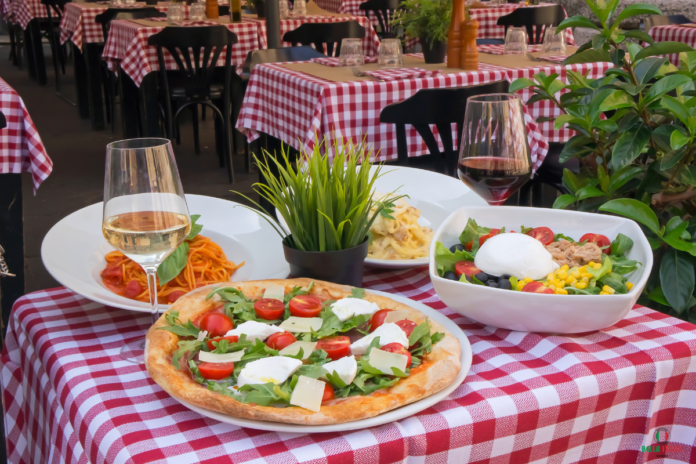An Overview of Regional Flavors and Traditions: Italy’s culinary landscape is as diverse as its rich history and cultural tapestry. Each region boasts its own unique flavors, local ingredients, and culinary traditions. Here is just a little taste of the fascinating history of Italy’s most famous cuisines.
Tuscan Cuisine
Tuscan cuisine is celbrated for its simplicity and use of high-quality, locally sourced ingredients. Influenced by the region’s fertile soil and agricultural abundance, Tuscan dishes showcase rustic flavors and hearty fare.
Staple ingredients include olive oil, beans, bread, and fresh vegetables. Tuscan classics such as ribollita (a hearty bean and vegetable soup), bistecca alla Fiorentina (Florentine-style steak), and pappa al pomodoro (tomato and bread soup) highlight the region’s culinary prowess.
Sicilian Cuisine
Sicilian cuisine, reflecting the island’s rich and varied history of invaders and settlers, is a delightful fusion of flavors from Greek, Arab, Spanish, and Norman influences. Known for its bold and vibrant flavors, Sicilian dishes feature fresh seafood, citrus fruits, olives, and aromatic spices.
Signature dishes include arancini (stuffed rice balls), caponata (sweet and sour eggplant stew), pasta alla Norma, and cannoli, showcasing the island’s diverse culinary heritage.
Emilian Cuisine
Emilian cuisine is characterized by its emphasis on quality ingredients and meticulous preparation. Parmigiano-Reggiano cheese, Prosciutto di Parma, balsamic vinegar, and handmade pastas such as tortellini and tagliatelle are iconic to the region.
Bolognese sauce (ragù alla Bolognese) and lasagna Bolognese exemplify the region’s commitment to simple yet sumptuous flavors.
Neapolitan Cuisine
Naples, the birthplace of pizza, holds a special place in the hearts of food lovers worldwide. Neapolitan cuisine is known for its bold and robust flavors, featuring fresh tomatoes, buffalo mozzarella, seafood, and aromatic herbs. Neapolitan pizza, with its thin, chewy crust and flavorful toppings, is a culinary icon.
Other Neapolitan specialties include spaghetti alle vongole (spaghetti with clams), sfogliatella (filled pastry), and cuoppo di mare (mixed fried seafood), reflecting the city’s vibrant street food culture and rich culinary heritage.
Ligurian Cuisine
Ligurian cuisine, nestled along the picturesque coastline of northwest Italy, is celebrated for its simple yet elegant dishes that showcase the region’s abundance of fresh seafood, fragrant herbs, and olive oil. Ligurian pesto, made with basil, pine nuts, garlic, Parmigiano-Reggiano, and olive oil, is a beloved sauce served with pasta, focaccia, and seafood dishes.
Other Ligurian specialties include trofie al pesto (hand-rolled pasta with pesto), focaccia di Recco (cheese-filled focaccia), and farinata (chickpea pancake).
Venetian Cuisine
Venetian cuisine, shaped by the city’s unique maritime location and historical trade routes, is a delightful fusion of flavors from land and sea. Venetian dishes feature fresh seafood, polenta, risotto, and seasonal vegetables, accented with aromatic spices and herbs.
Venetian classics such as risotto al nero di seppia (squid ink risotto), sarde in saor (marinated sardines), and fritto misto (mixed fried seafood) reflect the city’s vibrant culinary scene and cultural heritage.
Piedmontese Cuisine
Piedmontese cuisine, nestled in the northwest corner of Italy, is celebrated for its rich and hearty dishes highlighting the region’s agricultural bounty and alpine landscapes.
Piedmontese specialties include agnolotti del plin (filled pasta), brasato al Barolo (braised beef in Barolo wine), vitello tonnato (veal with tuna sauce), and gianduja chocolate, showcasing the region’s passion for slow-cooked comfort food and decadent desserts.
Roman Cuisine
Roman cuisine is a celebration of simplicity, freshness, and seasonal ingredients. Roman dishes feature staples such as pasta, artichokes, pecorino cheese, and cured meats, accented with fragrant herbs and spices. Roman classics such as cacio e pepe (pasta with cheese and pepper), carciofi alla Romana (Roman-style artichokes), and supplì (rice croquettes) capture the essence of Rome’s culinary heritage and timeless flavors.
If your not hungy after reading this, you must have eaten 5 minutes ago!
Feeling inspired you to create one of these dishes? We have the ingredients to make it authentic!

